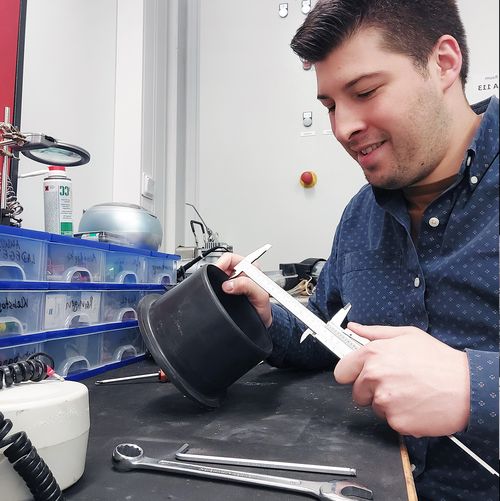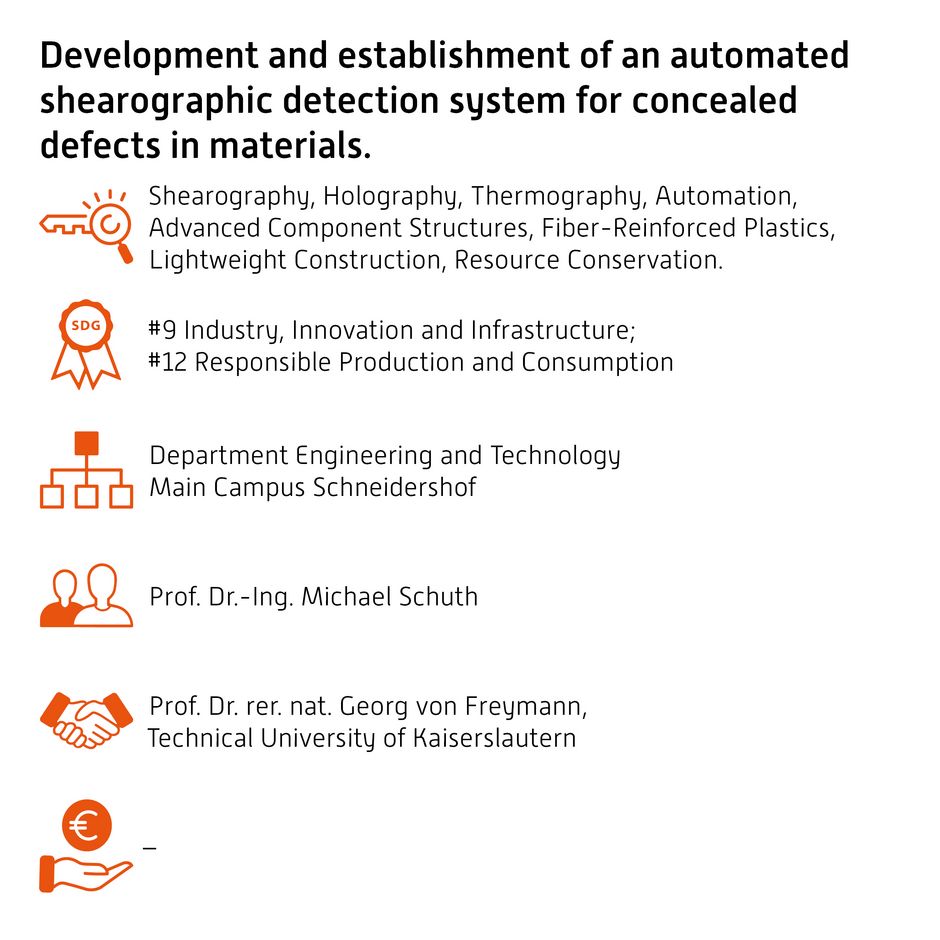After completing my general university entrance qualification, I decided to train as an industrial mechanic. This involved constantly dealing with various mechanical problems and solving them independently. Following the practical training, I decided to pursue a degree at a university of applied sciences.
Since Trier is close to my home, I decided to study at the Trier University of Applied Sciences. I came into contact with optical measurement technologies for the first time while carrying out my bachelor's thesis in the OGKB laboratory at the campus Schneidershof in Trier . I developed an optical setup for the application of spatial phase-shifting shearography using an endoscope. The "interferoscope" developed in the laboratory for optical measurement at Trier University of Applied Sciences is a unique combination of shearography and endoscopy that makes it possible to carry out highly accurate measurements in difficult-to-access interior spaces.
Directly after completing my bachelor's thesis, I continued my master's studies at Trier University of Applied Sciences. In various project work, I was able to continue exciting research activities in the field of interferometric measurement technology and deepen my knowledge in this area. I was also able to apply shearography in a practical environment as part of my Master's thesis, which I carried out in cooperation with the start-up company "TENTA VISION GmbH" founded at Trier University of Applied Sciences.
In the process, I succeeded in developing a thermal excitation unit with which the different measurement objects can be excited in a targeted manner, thus enabling interferometric component inspection.
For the future, I would like to see exciting practical projects in the field of non-destructive component monitoring, in order to exploit the enormous potential of interferometric measurement methods and to further establish shearography in the common practice of non-destructive testing.

Interferometric measuring methods for non-destructive component testing. This includes primarily shearography in analogy to alternative optical methods such as lock-in thermography. Non-destructive component monitoring of modern structures such as fiber-reinforced lightweight construction, honeycomb structures, foamed components or natural fiber-reinforced components. Non-destructive component testing in the automotive industry, aerospace or e.g. for the NDT of wind turbines.
Optical interferometric measuring methods such as shearography are being used more and more frequently for non-destructive testing. Digital shearography in particular, also known as ESPSI, is characterised by area measurements within seconds, non-contact use and material independence. Thanks to the further development of spatial phase-shift shearography, measurements are possible for the first time even under harsh environmental conditions.
Although interferometric measurement methods have long been used in the field of non-destructive testing, there is still a high research potential due to the new types of materials and the rapid advances in camera and laser technology. Within the framework of my doctorate, the construction of a series test stand for the automated measurement of modern component structures (e.g. fiber-reinforced lightweight construction, panels with honeycomb structure, semi-transparent measurement objects, additively manufactured structures or cast steel components) is to be realised. Associated with this is also the development and implementation of different excitation units to cause minimal deformation of the measurement objects and thus enable shearographic defect detection.
An improvement in the robustness of the process and the probability of detecting defects could be achieved by coupling the ESPSI process with alternative optical measurement methods, such as active thermography. In addition, a further development of shearography for automated interferometric measurement of interior spaces that are difficult to access (e.g. fiber-reinforced containers) is to be realised by means of an interferoscope (combination of endoscopy and interferometry).The aim of the research project is to further develop spatial phase-shifting shearography in order to carry out automated measurements under comparatively harsh environmental conditions in industry. The increasing complexity of lightweight components and the resulting demand for non-destructive testing methods with the highest possible reliability are taken into account, whereby the trend is towards combining methods in multi-sensor systems in order to be able to detect a wealth of possible defects even on complex component structures.

Optical Measurement Theory - Mastervorlesung Maschinenbau, engl.
Konstruktionslehre - Bachelorstudiengang FB Technik
You are leaving the official website of Trier University of Applied Sciences